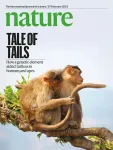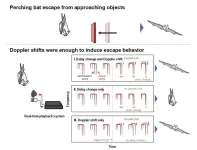(Press-News.org) HOUSTON ― Researchers at The University of Texas MD Anderson Cancer Center built a new atlas of lung cells, uncovering new cellular pathways and precursors in the development of lung adenocarcinoma, the most common type of lung cancer. These findings, published today in Nature, open the door for development of new strategies to detect or intercept the disease in its earliest stages.
Led by Humam Kadara, Ph.D., professor of Translational Molecular Pathology and Linghua Wang, M.D., Ph.D., associate professor of Genomic Medicine, the team generated an atlas of around 250,000 normal and cancerous epithelial cells that line the lungs by studying genetic changes in each of these cells individually using a technology called single-cell sequencing.
Among the key findings of this multidisciplinary effort was the discovery and validation of a transitional alveolar cell state that harbors KRAS mutations, even in normal lung cells, and ultimately transitions to lung adenocarcinoma.
Lung cells are hijacked in transition
Alveolar cells, which are epithelial cells crucial for gas exchange inside the lung, can be grouped into two cell types. Type I cells are more common and primarily function in gas exchange, while type II cells are fewer in number and provide support for this process. In the event of injury to the lung, type II cells have inherent properties that allow them to differentiate into type I cells to replace damaged cells.
According to Kadara, this transition process can be “hijacked,” leading to a different fate for some of these transitioning type II cells.
“The large number of epithelial cells we studied, coupled with new technologies, enabled us to identify two distinct fates for type II cells,” Kadara said. “They share a common intermediate state, but one path leads to type I cells and the other progresses to tumors. Interestingly, we even found these intermediate cells in normal lung tissue and in normal regions surrounding lung cancers, and they’re stuck there. If they were transient, or quickly transitioning, we wouldn’t find as many of them, but they’re there.”
The researchers also discovered that these intermediate cells in normal tissue, which were not yet cancerous or even precancerous, had KRAS driver mutations that were not found in other cell types but matched those in the tumors of the same patients.
According to the authors, bulk sequencing previously established KRAS mutations in normal tissue. But using this new approach and other computational tools, the researchers established that these mutations were coming from one specific cell type and inferred they could be precursors to adenocarcinoma. Further analysis of this transition process is needed to fully understand the mechanisms at work.
“Leveraging multimodal and dynamic spatial imaging and molecular profiling in 2D and 3D, our team is pursuing a deeper exploration of the critical transition process during lung tumorigenesis, from normal epithelial cells to precancerous lesions and ultimately to invasive cancer,” Wang said. “The team did find that signatures of these cells were enriched in lung precancers and adenocarcinomas.”
Confirmation and next steps
To confirm their findings in vivo, the team used a model with tobacco carcinogen exposure, which creates lung damage like that incurred by cigarette smoke. They hypothesized that smoking, which is causally related to lung cancer, could stimulate the alveolar transitional state by “injuring” the lung tissue.
Not only did the models display intermediate cells before any tumor or premalignant lesion developed, but these cells persisted. The researchers found the intermediate cells persisted for six to seven months after the end of carcinogen exposure. Like their findings in the human cells, these intermediate cells had KRAS mutations and expressed signatures of KRAS activation.
Indeed, when the team generated in vitro organ models, or organoids, with these types of cells, they found the intermediate cells were highly responsive to a KRAS inhibitor.
“Our study provides unequivocal evidence that tumor cells do, indeed, arise from these intermediate cells, opening the door for new research avenues,” Kadara said. “These findings are very exciting since they suggest that KRAS inhibitors could be clinically beneficial for treatment or even interception of primitive stages of lung adenocarcinoma.”
Current efforts by the Kadara lab and collaborators, like Wang, are exploring targeting these cells with combination therapies and investigating the mechanisms of their transformation to lung adenocarcinoma including inflammation.
“These early transformations could be significantly influenced by the surrounding tumor microenvironment,” Wang said. “Obtaining a comprehensive understanding of the dynamic interactions between these cells and the immune microenvironment through in-depth spatial profiling may provide novel insights vital for early detection and the development of interception strategies.
This work was funded by Johnson & Johnson, the National Cancer Institute (NCI) (R01CA205608, R01CA272863, T32CA217789), NCI Cancer Systems Biology Consortium (U01CA264583), NCI Human Tumor Atlas Network (1U2CCA233238), and the Cancer Prevention and Research Institute of Texas (CPRIT) (RP150079, RP220101).
END
Study unravels the earliest cellular genesis of lung adenocarcinoma
Findings could lead to earlier detection and intervention
2024-02-28
ELSE PRESS RELEASES FROM THIS DATE:
Change in gene code may explain how human ancestors lost tails
2024-02-28
A genetic change in our ancient ancestors may partly explain why humans don’t have tails like monkeys, finds a new study led by researchers at NYU Grossman School of Medicine.
Published online February 28 as the cover story of the journal Nature, the work compared the DNA of tail-less apes and humans to that of tailed monkeys, and found an insertion of DNA shared by apes and humans, but missing in monkeys. When the research team engineered a series of mice to examine whether the insertion, in a gene called TBXT, affected their tails, they found a variety of tail effects, including some mice born without tails. ...
Risk of hospital readmission after surgery is high for older Americans
2024-02-28
New Haven, Conn. — A new Yale study finds an increased risk of hospital readmission for older Americans within 180 days of undergoing major surgery — a risk that is particularly acute for individuals who are frail or have dementia.
The findings were published Feb. 28 in the journal JAMA Network Open.
Previous research by the same Yale team demonstrated that major surgery is a common event for older Americans and also demonstrated a heightened mortality risk within one year of major surgery for people who are age 65 and older. The new study is the first to describe both the short-term risk (within 30 days) and longer-term ...
How molecular “handedness” emerged in early biology
2024-02-28
LA JOLLA, CA—Molecules often have a structural asymmetry called chirality, which means they can appear in alternative, mirror-image versions, akin to the left and right versions of human hands. One of the great mysteries about the origins of life on Earth is that virtually all of the fundamental molecules of biology, such as the building blocks of proteins and DNA, appear in just one chiral form.
Scripps Research chemists, in two high-profile studies, have now proposed an elegant solution to this mystery, showing how this single-handedness or “homochirality” could have become established in biology.
The studies were published in the Proceedings ...
The James Webb Space Telescope reveals the central role of low-mass galaxies in the reionization process of the Universe
2024-02-28
PARIS, France and BEER-SHEVA, Israel, February 28, 2024 – The James Webb Space Telescope (JWST)[1], developed by NASA and ESA, has just obtained the first spectra of very low-mass galaxies less than a billion years after the Big Bang. A technological feat made possible by the unique combination of JWST sensitivity and the gravitational lensing effect of the Abell 2744 cluster: nearby galaxies act like cosmic magnifiers, distorting space and amplifying the light of background galaxies. By demonstrating that small galaxies are very likely at the origin of the reionization of the universe, this discovery represents a major breakthrough in our knowledge of the cosmos.
The international research ...
Immunotherapy combination may benefit patients with transplanted kidneys and advanced skin cancers
2024-02-28
People who have had a kidney transplant are at high risk for developing skin cancers. New research directed by investigators from the Johns Hopkins Kimmel Cancer Center is exploring the best combination of treatments to target skin cancers while preserving the transplanted organs.
Now, they report results from a clinical trial testing a novel drug combination designed to stimulate the immune system to fight advanced, potentially lethal skin cancers while not permanently damaging patients’ transplanted kidneys. The treatment included two immune-suppressing drugs ...
Nature’s sonar: Scientists reveal how Japanese horseshoe bats perceive moving objects
2024-02-28
Unlike most animals that rely on visual senses, bats navigate and locate prey or obstacles through echolocation. By emitting sounds and comparing them to the reflected echoes, bats can “visualize” movement in the environment. When sound waves encounter a moving object, they can undergo changes such as a Doppler shift in frequency or experience a delay, which the bat can sense. However, it is unclear which acoustic characteristics bats rely on to detect moving objects.
Japanese horseshoe bats (Rhinolophus ferrumequinum nippon) emit ultrasound pulses that are characterized ...
Dimensions Research GPT – evidence-based research insights for ChatGPT platform users
2024-02-28
Digital Science is pleased to announce the launch of two new products – Dimensions Research GPT and Dimensions Research GPT Enterprise – bringing the unmatched, trusted research coverage of Dimensions to the ChatGPT platform.
Users can get AI-generated answers to research-related questions on the GPT platform informed by Dimensions’ huge database, making ChatGPT more research-specific for topic exploration.
Available to users of both the free and paid Dimensions Analytics web application, Dimensions Research GPT and Dimensions Research GPT Enterprise help overcome ...
Calcium crystal deposits in the knee contribute to joint damage
2024-02-28
(Boston)— Knee osteoarthritis (OA) is the most common form of arthritis, affecting approximately 600 million people worldwide and 34 million people in the U.S. There are no treatments available that prevent its progression to date. Recommended pharmacological treatments for symptoms have either small-to moderate effects or short-term effects, often with side effects, and lifestyle behaviors such as exercise and weight loss are under-utilized.
Historically, intra-articular mineralization (IAM) or calcium crystal deposits in the joint, were thought to be of no clinical consequence, and perhaps just something that happens with older ...
International team led by BSC develops artificial intelligence technology to improve treatment of rare diseases
2024-02-28
An international team of scientists led by ICREA researcher and Director of the Life Sciences Department at the Barcelona Supercomputing Centre - Centro Nacional de Supercomputación (BSC-CNS), Alfonso Valencia, has developed a technology based on artificial intelligence (AI) for the study of minority diseases and has successfully applied it to identify the possible causes of the appearance of what are known as myasthenic-congenital syndromes, a group of rare inherited disorders that limit the ability to move and cause varying degrees of muscle weakness in patients.
The lack of available data on minority, also known as rare, diseases makes research in this area extremely ...
Anti-cancer drug could improve symptoms after stroke
2024-02-28
A study by the Institut de Neurociències of the UAB (INc-UAB) demonstrates in animal models the benefits of vorinostat after having suffered a stroke. The drug, used in humans to treat cutaneous T-cell lymphoma, has been proved to mitigate brain injuries and help in restoring brain tissue.
Ischemic stroke is the second leading cause of death worldwide and occurs when blood flow cannot reach the brain due to an obstruction. For a more or less long period of time, the brain does not receive oxygen and this causes damage and functional impairment. Hypertension is the most frequent modifiable risk factor for stroke and is associated with worse recoveries.
Currently, ...
LAST 30 PRESS RELEASES:
HKUST Engineering researchers developed a novel photodetector to enhance the performance of on-chip light monitoring
Strategic river sensors could have forewarned of Texas Camp flood disaster
Drone sampling of whale breath reveals first evidence of potentially deadly virus in Arctic
Roman soldiers defending Hadrian’s Wall infected by parasites, study finds
Pinochet’s prisoners were tormented with music but still found solace in it, a new book reveals
Fertility remains high in rural Tanzania despite access to family planning
AI-assisted device can improve autism care access
Kinetic careers
Uncovering how parasitic plants avoid attacking themselves to improve crop resistance
Nanoparticle vaccine strategy could protect against Ebola and other deadly filoviruses
Study finds brain care score can predict risk of stroke across racial groups
Key lung immune cells can intensify allergic reactions
Do hormones explain why women experience more gut pain?
New materials conduct ions in solids as easily as in liquids
Breakthrough of the Year: Renewable energy begins to eclipse fossil fuel-based sources
LLM use is reshaping scientific enterprise by increasing output, reducing quality and more
Introducing LightGen, a chip for ultra-fast, ultra-efficient generative AI
Astronomers see fireworks from violent collisions around nearby star
ACC/AHA issue new guideline on managing congenital heart disease in adults
Cosmic crash caught on camera
Is talented youth nurtured the wrong way? New study shows: top performers develop differently than assumed
Ants: An untapped resource in the development of antibiotics?
Archaeologists use AI to create prehistoric video game
Mitochondria migrate toward the cell membrane in response to high glucose levels
Tiny viral switch offers hope against drug-resistant bacteria
Most parents aware of early peanut introduction guidelines, but confused about details
HPV vaccine can protect against severe lesions of the vulva and vagina
Virtual care provision and emergency department use among children and youth
Quadrivalent HPV vaccine and high-grade vulvovaginal lesions
Insights into dry eyes gained from stem cell-derived tear glands
[Press-News.org] Study unravels the earliest cellular genesis of lung adenocarcinomaFindings could lead to earlier detection and intervention






